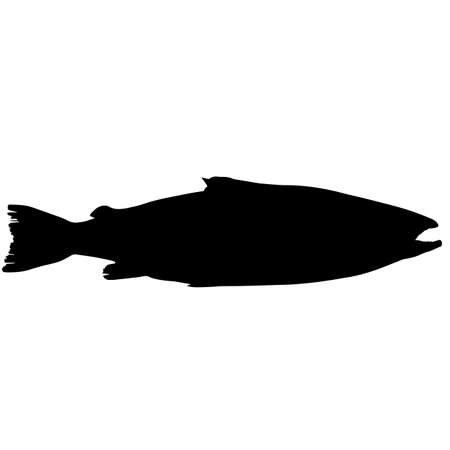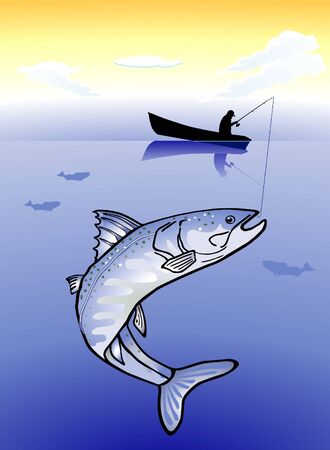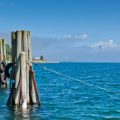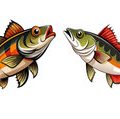Choosing Your Dream Backcountry Fishing Destination
When it comes to planning the ultimate DIY fishing trip, picking the right backcountry destination is the first and most crucial step. The United States offers an incredible variety of remote fishing spots, from alpine lakes in the Rockies to hidden streams in the Appalachians and untouched coastal bays in Alaska. To make your adventure unforgettable, you’ll want to consider a few key factors before setting out.
Research Local Fish Species
Every region has its own signature catches. Do some homework on what fish are native or abundant in your target area—whether it’s wild trout in Montana, bass in the Ozarks, or salmon runs in Alaska. Understanding the local species will help you choose the best destination for your fishing goals and ensure you pack the right gear.
Accessibility Matters
Backcountry doesn’t always mean impossible to reach, but accessibility can vary widely. Are you up for a multi-day hike, or do you prefer somewhere you can reach by 4×4 or canoe? Check trail maps, road conditions, and any permits required for access. Some of the best fishing holes require a bit of effort—but that’s part of what makes them special.
Consider Seasonality
The time of year plays a huge role in both fish activity and your overall experience. Peak seasons differ based on location and species—spring may be prime for trout, while late summer is perfect for bass or pike. Also, remember to factor in weather conditions, water levels, and local regulations which can change throughout the year.
Tips for Finding the Perfect Spot
Check state wildlife websites for stocking reports and seasonal updates, join online angler forums for local insights, and don’t overlook old-fashioned word-of-mouth tips from seasoned fishermen. The best backcountry fishing trips are often built on solid research and a willingness to explore beyond the obvious.
Essential Gear and Packing List
Before you head into the wild for your ultimate DIY fishing trip, having the right gear can make or break your backcountry adventure. Here’s a comprehensive breakdown of must-have fishing equipment, camping essentials, and safety supplies—plus a few trusted American-made brands to keep you prepared and comfortable out there.
Fishing Equipment: What You Can’t Leave Behind
| Item | Recommended Brand | Why It’s Essential |
|---|---|---|
| Rod & Reel Combo | St. Croix, Penn | Durable, versatile combos handle various fish species and rugged conditions. |
| Tackle Box & Lures | Plano, Rapala (lures) | Keeps your bait, hooks, and other tools organized and ready to go. |
| Line & Leader Material | Berkley Trilene, Seaguar (leader) | Strong lines prevent breakage; leaders help with toothy or line-shy fish. |
| Pliers & Multi-tool | Leatherman, Gerber | Essential for hook removal, cutting line, and making quick repairs. |
| Landing Net | EGO Fishing Nets | Makes it easier to land bigger catches safely and efficiently. |
| Waders & Boots (if applicable) | Simms, Redington | Stay dry and comfortable when fishing in streams or marshes. |
Camping Supplies for the Backcountry
| Item | Recommended Brand | Description/Functionality |
|---|---|---|
| Tent/Shelter | Big Agnes, REI Co-op | Lightweight and weather-resistant for unpredictable backcountry nights. |
| Sleeping Bag & Pad | Nemo Equipment, Therm-a-Rest (pad) | A good night’s sleep keeps you sharp for early morning casts. |
| Camp Stove & Cookware | Jetboil, MSR (Mountain Safety Research) | Quick meals mean more time fishing; compact stoves are perfect for remote trips. |
| Water Filtration System/Bottles | Sawyer Products, Nalgene (bottle) | Sustainable hydration—skip hauling gallons of water into the wild. |
| Headlamp/Flashlight & Batteries | Petzl, Maglite | For late-night rigging or early morning hikes to secret spots. |
Backcountry Safety Essentials
- First Aid Kit: Adventure Medical Kits makes compact kits designed for wilderness use.
- Navigation Tools: Don’t rely solely on your phone; bring a Suunto compass and a waterproof map.
- Bear Spray: Especially vital in parts of the Rockies or Alaska; look for Counter Assault brand.
- Sunscreen & Bug Spray: Sawyer and Bullfrog offer effective protection against sunburn and mosquitoes.
- Emergency Communication Device: Garmin inReach lets you send SOS alerts if cell service is nonexistent.
- Duct Tape & Repair Kits: Always handy for gear fixes—Gorilla Tape is a staple among outdoorsy folks.
- Trekking Poles: Black Diamond poles help with uneven terrain while carrying heavy loads.
- Packed Food: Mountain House freeze-dried meals are made in the USA and easy to prepare after a long day of fishing.
Packing Pro Tip:
Laying out all your gear before packing ensures nothing gets left behind. Use a checklist app like PackPoint or an old-school notepad to double-check as you load up. The right American-made gear doesn’t just support local businesses—it means quality you can count on deep in the backcountry!

3. Prepping for the Great Outdoors
Before you head out on your DIY backcountry fishing adventure, thorough preparation is key to a safe and rewarding experience. Start with physical conditioning—backcountry expeditions often require hiking over rugged terrain while carrying all your gear. Consider adding cardio and strength training to your routine in the weeks leading up to your trip so you’re ready for long days on the move.
Route Planning: Tools and Tips
Careful route planning ensures you don’t end up lost or unprepared. Leverage US-based mapping apps like OnX, Gaia GPS, or AllTrails to plot your path, mark fishing spots, and download offline maps. These tools are invaluable for tracking mileage, elevation gain, water sources, and campsite locations—especially in areas with limited cell service.
Permits and Regulations
Don’t overlook the paperwork! Many backcountry areas in the US require permits for entry, camping, or fishing. Research federal and state requirements for your destination—check National Park Service or U.S. Forest Service websites for details—and secure all necessary permits before you go. Be sure to review local fishing regulations as well; size limits, catch-and-release rules, and seasonal restrictions vary widely across states and waterways.
Leave No Trace: Protecting Wild Places
Finally, practice Leave No Trace ethics to help preserve America’s wild spaces for future anglers. Pack out all trash (including fishing line), camp at least 200 feet from lakes and streams, minimize campfire impact, and respect wildlife. Leaving a pristine environment not only safeguards fish populations but also ensures that everyone can enjoy these remote waters for years to come.
4. Fishing Techniques for Remote Waters
When you’re heading out on a backcountry fishing expedition, understanding the most effective American fishing methods and bait choices can make all the difference. Secluded lakes and rivers often hold fish that are less pressured by anglers, but they can also be more sensitive to changes in their environment. Here’s an overview of proven techniques and the best bait options for those off-the-grid locations.
Top Fishing Methods for Backcountry Adventures
| Technique | Best For | Why It Works |
|---|---|---|
| Spin Fishing | Lakes & Rivers | Versatile, covers water quickly, ideal for casting from shore or canoe. |
| Fly Fishing | Streams & Shallow Lakes | Mimics natural prey; great for trout and panfish in clear, cold waters. |
| Baitcasting | Larger Rivers & Deep Lakes | Accurate casting with heavier lures; effective for bass and pike. |
Bait Choices for Secluded Waters
| Bait Type | Target Species | Notes |
|---|---|---|
| Live Worms/Nightcrawlers | Panfish, Trout, Bass | Easily transported and highly attractive to most freshwater fish. |
| Soft Plastic Lures | Bass, Pike, Walleye | Durable and reusable; great for catch-and-release fishing. |
| Spinnerbaits/Spoons | Trout, Pike, Smallmouth Bass | Create vibration and flash to attract fish in murky waters. |
Tactical Tips for Success
- Approach quietly: In remote areas, fish are not used to human presence. Move slowly and minimize noise to avoid spooking them.
- Match the hatch: Observe local insect life—using flies or lures that mimic what’s naturally available increases your chances of hooking up.
- Use lighter tackle: Fish in secluded waters are often more willing to bite smaller presentations. Light rods and lines increase sensitivity and fun.
Quick Pro Tips:
- If targeting trout in alpine lakes, early morning and late evening are prime times when fish feed near the surface.
- Casting parallel to shorelines or near submerged structures increases your chances of finding active fish.
By mastering these American angling techniques and choosing the right baits, you’ll maximize your odds of landing that trophy catch on your next DIY backcountry fishing adventure.
5. Camp Setup and Cooking Your Fresh Catch
Pointers for Choosing a Safe Campsite
When you’re deep in the backcountry, picking the right campsite is crucial for safety and comfort. Always look for flat, elevated ground to avoid flooding if it rains overnight. Stay at least 200 feet from lakes and streams to protect the environment and reduce encounters with wildlife. Scan for dead trees or branches overhead—known as “widowmakers”—that could fall. If bears are common in the area, set up your cooking station well away from your sleeping spot, and use bear-proof containers for food storage.
Backcountry Cooking Hacks
Cooking in the wild doesn’t mean sacrificing flavor or fun! Invest in a lightweight camp stove or a compact grill grate that fits over your campfire ring. Bring aluminum foil—it’s perfect for wrapping fish fillets and veggies for easy, mess-free cooking. Pre-mix seasonings at home in small containers, so you don’t have to lug around full spice jars. Remember, keep your cooking area clean and pack out all food scraps to leave no trace.
Authentic American-Style Grilled Fish Recipes
Classic Lemon-Pepper Trout
Pat your freshly caught trout dry, then rub inside and out with olive oil, salt, cracked black pepper, and a squeeze of lemon juice. Stuff the cavity with a few lemon slices and fresh dill if available. Wrap tightly in foil and grill over hot coals for about 8-10 minutes per side until flaky.
Campfire Cajun Catfish
Sprinkle catfish fillets with Cajun seasoning (paprika, garlic powder, cayenne, thyme). Drizzle with melted butter and wrap in foil with sliced onions and bell peppers. Grill directly on the embers for 12-15 minutes. Serve with fire-toasted bread for a true taste of the South.
Simple Shore Lunch Bass Tacos
Season bass fillets with salt, pepper, and chili powder. Pan-fry over your camp stove until golden brown. Flake into warm tortillas with shredded cabbage, hot sauce, and a squeeze of lime—a backcountry spin on classic American fish tacos.
With smart campsite selection and creative cooking skills, every meal becomes part of your adventure—just remember to respect nature and savor every bite under the stars.
6. Staying Safe and Connected Off the Grid
When planning the ultimate DIY backcountry fishing expedition in the U.S., your safety should always be a top priority. The remoteness that makes these trips so appealing also means you need to be prepared for anything Mother Nature or unexpected situations might throw your way. Here’s how to stay safe and connected while you’re off the grid.
Wildlife Awareness
America’s wild places are home to bears, mountain lions, snakes, and other wildlife. Brush up on local wildlife in your destination before heading out. Know how to store food in bear-proof containers, make noise while hiking to avoid surprising animals, and recognize animal tracks and signs. Carry bear spray where it’s recommended and always respect wildlife from a distance—never try to feed or approach them for a photo-op.
Basic First Aid Skills
Packing a well-stocked first aid kit is a no-brainer, but knowing how to use it is equally important. Consider taking a basic wilderness first aid course; many outdoor outfitters offer them across the U.S. Learn how to treat cuts, sprains, insect bites, and recognize signs of hypothermia or dehydration. A laminated quick-reference card can be invaluable when nerves are high.
Weather Readiness
Weather in backcountry areas can change fast. Always check the forecast before you leave, but bring gear for rain, cold snaps, or heat waves regardless. Layering clothing is key—think moisture-wicking base layers and waterproof outerwear. Keep an eye on the sky: sudden dark clouds, distant thunder, or dropping temps can signal trouble. If storms roll in, know where to take shelter and avoid open water or high ground during lightning.
Staying Connected with SAT Phones & Emergency Beacons
Cell service is rare in America’s remote fishing spots. That’s why most seasoned anglers carry satellite phones (SAT phones) or personal locator beacons (PLBs). These devices can send SOS signals with your GPS location directly to rescue services if things go sideways. Test your device before you leave and let someone at home know your planned route and expected return time. Even a simple two-way radio can be useful for communication within your group.
Your Safety Net
By staying aware of your environment, brushing up on first aid skills, preparing for unpredictable weather, and bringing reliable emergency communication tools, you’ll ensure that your backcountry fishing adventure remains memorable for all the right reasons—and you’ll have peace of mind as you immerse yourself in America’s wildest waters.
7. Memories and Conservation
Your backcountry fishing trip is more than just an adventure—it’s a story you’ll want to remember and a responsibility you share with future anglers. Capturing these moments is easier than ever thanks to smartphone technology, but it’s important to do so thoughtfully. For the best photos, use natural light during early morning or late afternoon, focus on your subject (whether it’s a trophy fish or a stunning landscape), and keep your phone in a waterproof case. Try experimenting with different angles—get low near the water for dramatic shots or include your fishing buddies for a sense of scale and camaraderie.
While making memories, always remember to respect the delicate balance of native habitats. Stick to established trails when hiking to your fishing spot, avoid trampling vegetation, and never leave trash behind. Practice catch-and-release whenever possible, especially with native species, using barbless hooks and wet hands to minimize stress on the fish. If you’re keeping fish for dinner, follow local regulations closely and only take what you need.
America’s wild fishing spots are treasures that require active stewardship. Join local conservation organizations or volunteer for habitat restoration days; even small actions like picking up litter or reporting invasive species sightings make a difference. Educate fellow anglers about sustainable practices and consider supporting state wildlife agencies by purchasing appropriate licenses or making donations. By taking care of our backcountry fisheries today, you help ensure that future generations can experience their magic—and capture their own unforgettable moments.


